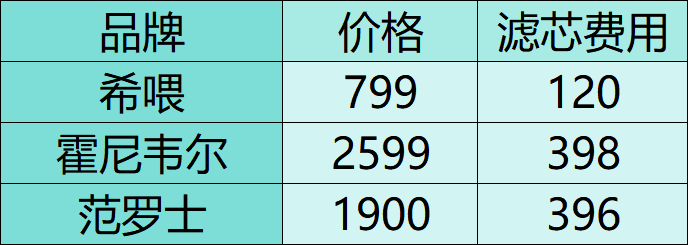文章目录
- 前言
- 一、ArkTS基本介绍
- 1、 ArkTS组成
- 2、组件参数和属性
- 2.1、区分参数和属性的含义
- 2.2、父子组件嵌套
- 二、装饰器语法
- 1.@State
- 2.@Prop
- 3.@Link
- 4.@Watch
- 5.@Provide和@Consume
- 6.@Observed和@ObjectLink
- 代码示例:
- 示例1:(不使用@Observed和@ObjectLink)
- 示例2:(使用@Observed和@ObjectLink)
- 三、总结
- 四、未完待更
前言
HarmonyOS NEXT(鸿蒙应用)开发快速入门教程ArkTS语法之装饰器篇,基于HarmonyOS NEXT Beta1版本(api 12)讲解。
本文将从前端开发者角度来理解和学习每个语法点,通过举例HarmonyOS NEXT和web端两种领域类似语法的使用,帮助前端开发人员快速入门HarmonyOS NEXT。在每个装饰器讲解上把同一个功能分别用ArkTs和vue 2种代码进行演示,使其更深刻理解每个装饰器的作用,在类比中学习记忆达到无缝衔接。
一、ArkTS基本介绍
ArkTs是鸿蒙开发主要语言,在以TS为语法基础上进行部分扩展和约束,以提升程序执行稳定性和性能。ArkTs可以看成严格模式的TS,并结合声明式UI进行页面布局。ArkTs吸收各家语言优点形成一种全新语法,在ArkTs身上我们到处都能看到web、vue、flutter、安卓等前端领域语法的身影
1、 ArkTS组成

说明:
1、以@开头为装饰器,装饰器都有固定英文名称,不同装饰器有着不同作用。例如@Entry表示当前组件为页面级别组件(页面路由入口),@Component声明该文件为组件 @State声明一个可引起UI响应式的变量等等
2、struct 后面跟着组件名称,固定写法,struct 类似es6 类里面关键字class, 后面的组件名称可以自定义,内部语法也类似class类语法,包括方法和属性添加
3、UI描述固定放置在build函数里面,换句话说build函数里面主要写布局代码
4、系统组件:一些系统自带的组件例如文字(Text)、按钮(Button)、输入框(TextInput)等,类似web里面dom标签,子组件通过嵌套标签写法引入,组件的属性和事件通过链式调用。
2、组件参数和属性
2.1、区分参数和属性的含义
组件标签函数入参称为组件参数,也即括号内的内容,而点后面的链式调用函数称为属性,事件和属性一样也通过链式函数调用
示例2.1:
build() {Column(){Button('按钮').type(ButtonType.Capsule).onClick(()=>{console.log('click')})}.width('500px').height('200px').backgroundColor(Color.Black)}如上述示例所示,'按钮’为组件Button入参,type为Button属性,onClick为Button点击事件,width、height、backgroundColor为组件Column属性。
所有组件都有通用属性,通用属性大部分类似web里的css属性,例如设置组件的尺寸宽高、位置、背景、透明度等。
2.2、父子组件嵌套
父组件花括号{}内写子组件,如示例2.1Column为父组件,Button为子组件,如果没有子组件可以省略{},如示例2.1的Button
示例2.1等价于如下的html写法:
<div style="height:200px;width:500px;background:black"><button >按钮</button></div>
二、装饰器语法
常用的装饰器语法跟vue很像,本模块将通过ArkTs示例结合web(主要vue)示例演示对比,使其更好的理解和掌握ArkTs装饰器的使用。
1.@State
@State用来装饰变量,通过@State装饰的变量改变后才能触发UI刷新,而普遍变量改变不触发UI刷新,相当于Vue3的ref
语法:@State 变量名:类型=值
//例如
@State sex:string="男"
示例:
ArkTs写法:
@Entry
@Component
struct Demo {@State name:string='小红'//姓名age:number=10//年龄build() {Column({space:10}){Text(`姓名:${this.name}`).fontColor(Color.Black)Text(`年龄${this.age}`).fontColor(Color.Black)Button('点击改变姓名').onClick(()=>{this.name='小明'})Button('点击改变年龄').onClick(()=>{this.age=20})}}
}等价于
Vue3写法:
<template><div style="display:flex;flex-direction: column;"><span>姓名{{name}}</span><span>年龄{{age}}</span><button @click="onChangeName">点击改变姓名</button><button @click="onChangeAge">点击改变年龄</button></div>
</template>
<script setup>
import {ref} from 'vue'
const name=ref('小红')
let age=10const onChangeName=()=>{name.value='小明'
}
const onChangeAge=()=>{age=20
}</script>
运行效果:

上述示例name(姓名)变量用@State修饰而age(年龄)变量为普通变量,当点击改变姓名按钮,姓名变成小红,当点击改变年龄按钮,年龄不变
2.@Prop
@Prop用来定义子组件的入参,和父组件建立单向的同步关系,相当于vue中的prop,区别在于vue中的prop不允许改变值,而鸿蒙中可以随意改变值,但是改变后的值不会同步回其父组件,也就是数据是单向传递。
语法:@Prop 变量名:类型=默认值
@Prop size:number=20
示例:
ArkTs写法:
//父组件
@Entry
@Component
struct Parent {@State city:string='上海'build() {Column({space:20}) {//引入子组件Child({city:this.city})Button('定位').onClick(()=>{this.city='深圳'})}}
}//子组件
@Component
struct Child{@Prop city:string='北京' //默认值北京build() {Column({space:10}) {Text(`当前所处城市:${this.city}`).fontSize(20)}}
}等价于
Vue3写法:
child.vue(子组件):
<template><div><span>当前所处的城市:{{city}}</span></div>
</template>
<script setup>
const props=defineProps({city:{type:String,default:'北京'}
})</script>
parent.vue(父组件):
<template><div style="display:flex;flex-direction: column;"><Child :city="city"></Child><button @click="onLocation">定位</button></div>
</template>
<script setup>
import {ref} from 'vue'
import Child from './child.vue'
const city=ref('上海')
//定位点击事件
const onLocation=()=>{city.value='深圳'
}</script>
<style scoped></style>
运行效果:

ps:ArkTS支持在同一个文件内自定义多个组件,也可以分出去单独写子组件通过import导入
3.@Link
@Link用来定义子组件入参,和父组件建立双向绑定关系,相当于vue中的v-model,区别在于@Link是直接在子组件内修改数据源,而v-model是语法糖,本质通过事件通知父组件来改变值。
语法:@Link 变量名:类型
@Link loop:boolean
示例:
ArkTs写法:
//父组件
@Entry
@Component
struct Parent {@State value: string = '' //输入内容build() {Column({ space: 20 }) {Text(`输入框值为:${this.value}`)Child({ value: this.value })}.padding(20)}
}//子组件
@Component
struct Child {@Link value: string //输入内容build() {//输入框TextInput({ text: this.value }).onChange((value: string) => { //输入事件监听this.value = value})}
}等价于
Vue3写法:
child.vue(子组件):
<template><input :value="modelValue" @input="onChange"/>
</template>
<script setup>
const props=defineProps({modelValue:{type:String,default:''}
})const emits=defineEmits(['update:modelValue'])//输入事件监听
const onChange=(e)=>{console.log(e,'e')emits('update:modelValue',e.target.value)
}</script>
parent.vue(父组件):
<template><div style="display:flex;flex-direction: column;"><span>输入框值为:{{value}}</span><Child v-model="value"></Child></div>
</template>
<script setup>
import {ref} from 'vue'
import Child from './child.vue'//输入内容
const value=ref('')</script>
<style scoped></style>
运行效果:

ps:@Link修饰的变量不能设置默认值
4.@Watch
@Watch用于对状态变量的监听,当变量值变化会触发回调。相当于vue中 watch。
语法:
其他装饰器 @Watch(回调函数名) 变量名:类型=值
或
@Watch(回调函数名) 其他装饰器 变量名:类型=值
推荐@Watch写在其他装饰器后面
@State @Watch("onIndexChange") index:number=0
//监听值改变回调
onIndexChange(){
}
区别和注意点:
1、@Watch无法获取旧值,相当于无vue-watch的oldValue入参
2、@Watch无法深度监听,相当vue-watch的deep属性为false
3、@Watch无法设置初始化触发,相当vue-watch的immediate属性为false
4、@Watch可监听所有装饰器装饰的状态变量。不允许监听常规变量
5、@Watch对于数组监听能力跟vue2对数组响应式监听一样能监听到push、pop、splice、shift、unshift等数组操作变化
示例:
ArkTs写法:
//父组件
@Entry
@Component
struct Demo {private price: number = 10 //单价@State @Watch('onCountChange') count:number=1//数量@State total:number=10 //总价//数量变化监听onCountChange(){this.total=this.price*this.count}build() {Column({ space: 20 }) {Text(`单价:¥${this.price}`)Text(`数量:x${this.count}`)Text(`总价:¥${this.total}`)Button('数量+1').onClick(()=>{this.count++})}.padding(20).alignItems(HorizontalAlign.Start)}
}//子组件
@Component
struct Child {@Link value: string //输入内容build() {//输入框TextInput({ text: this.value }).onChange((value: string) => { //输入事件监听this.value = value})}
}等价于
Vue3写法:
<template><div style="display:flex;flex-direction: column;"><span>单价:¥{{price}}</span><span>数量:x{{count}}</span><span>总价:¥{{total}}</span><button @click="onCountChange">数量+1</button></div>
</template>
<script setup>
import {ref,watch} from 'vue'
//单价
const price=ref(10)
//数量
const count=ref(1)
//总价
const total=ref(10)
//数量+1
const onCountChange=()=>{count.value++
}
watch(count,(newValue,oldValue)=>{total.value=price.value*newValue
})</script>
<style scoped></style>
运行效果:

从上述例子可以看出watch回调函数中无任何入参,获取新值是通过重新访问属性值来获取,而旧值无法获取,这是第一点不足。第二点不足无法深层监听对象,第三点不足只能监听单个值变化,无法像vue3可以监听多个值。好在下一个装饰器语法版本(v2版本)将对这些不足点进行改进并支持,目前v2版本处于试用开发阶段还不成熟这里不过多介绍。
5.@Provide和@Consume
@Provide和@Consume成对使用,作用是把参数往子孙层传递,实现跨层级(多层级)传递。父组件使用@Provide修饰变量参数,子孙组件使用@Consume接收变量参数,跟vue3的Provide+Consume使用机制一样。
两种写法:
// 通过相同的变量名绑定
@Provide a: number = 0;
@Consume a: number;// 通过相同的变量别名绑定
@Provide('a') b: number = 0;
@Consume('a') c: number;
示例:
ArkTs写法:
//父组件
@Entry
@Component
struct Parent {@Provide('weight') weight: number = 50build() {Column({ space: 20 }) {Text(`父组件体重值:${this.weight}`)Button(`父组件体重+1`).onClick(() => {this.weight++})Child()}.padding(20).alignItems(HorizontalAlign.Start)}
}//子组件
@Component
struct Child {build() {Grandson()}
}//孙组件
@Component
struct Grandson {@Consume('weight') weight: numberbuild() {Column({ space: 20 }) {Text(`孙组件体重值:${this.weight}`)Button(`孙组件体重+1`).onClick(() => {this.weight++})}.margin({ top: 50 })}
}等价于
Vue3写法:
parent.vue(父组件):
<template><div><span>父组件体重值:{{ weight }}</span><button @click="onAdd">父组件体重+1</button><Child/></div>
</template><script setup>
import { ref,provide } from "vue";
import Child from './child.vue'const weight=ref(50)
provide('weight',weight)
const onAdd=()=>{weight.value++
}</script>child.vue(子组件):
<template><Grandson/>
</template><script setup>
import Grandson from "./grandson .vue";
</script>grandson.vue(孙组件)
<template><div><span>孙组件体重值:{{ weight }}</span><button @click="onAdd">孙组件体重+1</button></div></template><script setup>import { ref,inject } from "vue";const weight=inject('weight',50)const onAdd=()=>{weight.value++}</script>运行效果:

ps:@Consume修饰的变量不能设置默认值
6.@Observed和@ObjectLink
对于对象类型的数据劫持鸿蒙和vue不一样,不管是@State、@Prop、@Link或者@Provide+@Consume对于对象类型的数据只能监听到最外层变化,当对象嵌套多层对象内部对象的属性值改变将无法响应UI变化,@Observed和@ObjectLink就是为了解决这个问题而设计的。
使用方法:
1、@Observed用来修饰类(也即TS对象类型),被@Observed装饰的类,可以被观察到属性的变化,每一层的类都需要用@Observed修饰才能生效。
2、@ObjectLink装饰器在子组件中使用,用于装饰@Observed装饰的类的实例,和父组件中对应的状态变量建立双向数据绑定,也可以看成子组件的入参变量。
3、@Observed和@ObjectLink要配合自定义子组件使用才能生效,而且每嵌套一层就要抽离出一个子组件引入,简单理解就是每一层数据当入参传入子组件。
语法示例:
@Observed
class xxx{constructor(){}
}
子组件:
@ObjectLink 变量名:类型
代码示例:
场景设计—— 假设有个学生对象数据,对象里包含姓名、性别、和成绩属性,成绩属性又是个对象,包含语文、数学、英文分数属性。通过改变学生性别和分数观察UI变化。
示例1:(不使用@Observed和@ObjectLink)
//学生对象
class Student {name: string //姓名sex: string //性别score: ScoreData //分数对象constructor(name: string, sex: string, score: ScoreData) {this.name = namethis.sex = sexthis.score = score}
}//分数对象
class ScoreData {math: number //数学chinese: number //语文english: number //英语constructor(math: number, chinese: number, english: number) {this.math = maththis.chinese = chinesethis.english = english}
}@Entry
@Component
struct Demo {//学生对象实例@State student:Student=new Student("王明","男",new ScoreData(80,90,75))build() {Column({space:10}) {Text(`姓名:${this.student.name}`)Text(`性别:${this.student.sex}`)Text(`数学成绩:${this.student.score.math}分`)Text(`语文成绩:${this.student.score.chinese}分`)Text(`英语成绩:${this.student.score.english}分`)Button('改变性别').onClick(()=>{this.student.sex='女'})Button('改变数学成绩').onClick(()=>{this.student.score.math=10})}.width('100%').padding(20).alignItems(HorizontalAlign.Start)}
}
运行效果:

从运行效果可以看出性别变了,而数学分数未变,因为数学分数(math属性)属于对象中第二层数据,@State无法观察到多层变化,而性别(sex属性)属于第一层可以观察到变化。
示例2:(使用@Observed和@ObjectLink)
//学生对象
@Observed
class Student {name: string //姓名sex: string //性别score: ScoreData //分数对象constructor(name: string, sex: string, score: ScoreData) {this.name = namethis.sex = sexthis.score = score}
}//分数对象
@Observed
class ScoreData {math: number //数学chinese: number //语文english: number //英语constructor(math: number, chinese: number, english: number) {this.math = maththis.chinese = chinesethis.english = english}
}@Entry
@Component
struct Demo {//学生对象实例@State student: Student = new Student("王明", "男", new ScoreData(80, 90, 75))build() {Column({ space: 10 }) {Text(`姓名:${this.student.name}`)Text(`性别:${this.student.sex}`)ScoreView({data: this.student.score})Button('改变性别').onClick(() => {this.student.sex = '女'})Button('改变数学成绩').onClick(() => {this.student.score.math = 10})Button('改变语文成绩').onClick(() => {this.student.score.chinese--})}.width('100%').padding(20).alignItems(HorizontalAlign.Start)}
}//子组件
@Component
struct ScoreView {@ObjectLink data: ScoreData //分数对象build() {Column() {Text(`数学成绩:${this.data.math}分`)Text(`语文成绩:${this.data.chinese}分`)Text(`英语成绩:${this.data.english}分`)}}
}
运行效果:

从运行效果可以看出,因为使用了@Observed和@ObjectLink,所以修改第二层数据(数学和英文成绩)都会响应UI变化。
小结:
通过上面示例演示来看,鸿蒙对嵌套对象场景的开发显得力不从心,如果数据对象是n层就需要自定义n-1个子组件来传递每一层的数据,特别麻烦。好在官方已经注意到这些不足,在下个版本(v2版)提供的新的装饰器@ObservedV2+@Trace解决对象嵌套问题,v2版本目前处于开发试用阶段还没正式发布,这里不过多介绍,有兴趣可以自行查阅官网文档。
ps:对于多层嵌套场景不单单指对象中嵌套对象,还包括对象中嵌套数组或者数组中嵌套对象,因为在js世界里数组也是对象类型。
三、总结
上述6种装饰器语法是开发中比较高频率使用的装饰器,可以看出除了第六个剩下的都可以在vue中找到对应的语法,使用上几乎一样,所以从事前端开发特别是vue技术栈的开发人员可以快速无缝衔接。
四、未完待更
除了上述6种常用装饰器,ArkTs还有一些其他比较重要装饰器,将在下篇博文继续介绍。。。。。。


















